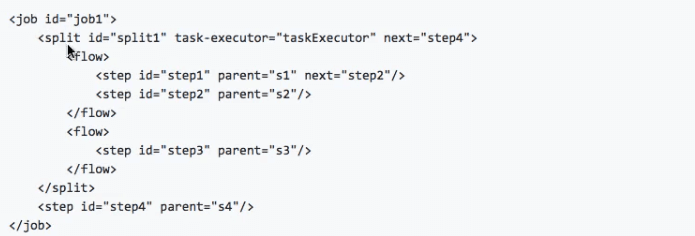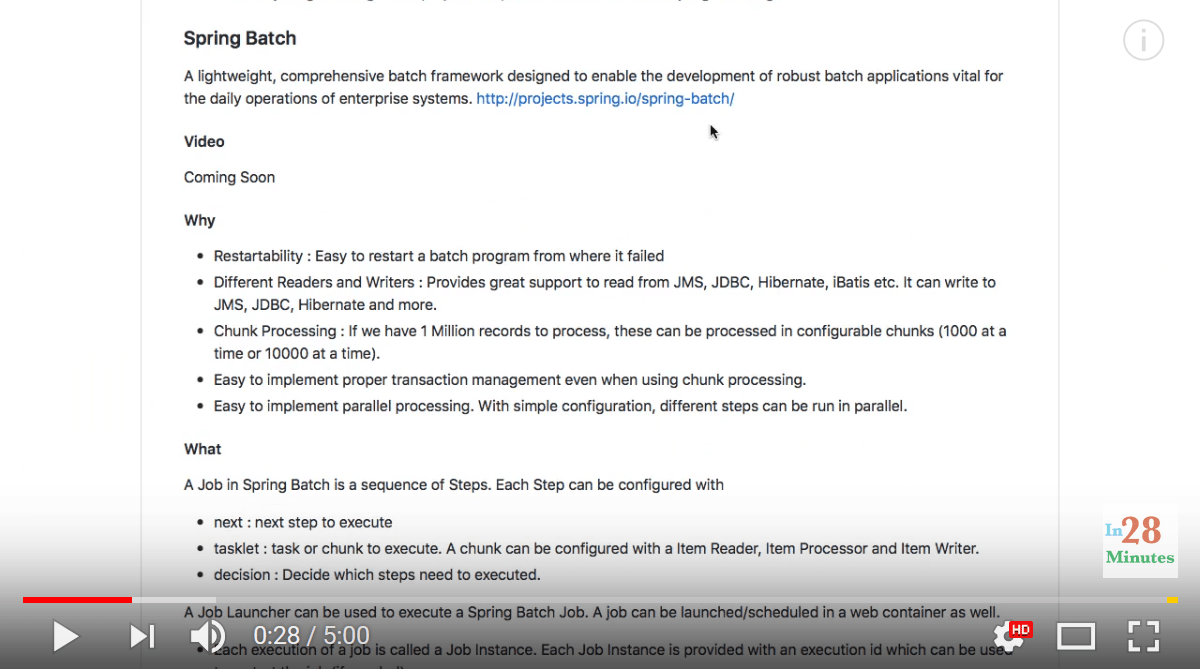Introduction to Spring Batch
Want to learn more about Spring Batch?
Join the DZone community and get the full member experience.
Join For FreeSpring Batch is a lightweight, comprehensive batch framework that is designed for use in developing robust batch applications. In this article, you will learn:
- What is Spring Batch?
- How does Spring Batch make building batch programs easier?
- What are important features of Spring Batch?
- What are important concepts to understand in Spring Batch?
- What are the best practices in using Spring Batch?
What Is Spring Batch?
Spring Batch is a lightweight, comprehensive batch framework designed for use in developing robust batch applications.
Why Is Spring Batch Useful?
The requirements of typical batch programs are very similar:
- Restartability: It is normally required to restart a batch program from where it had failed
- Different readers and writers: You need the ability to talk to different kinds of data sources and sinks. These include talking to a database, an external messaging service such as JMS, and many others.
- Chunk Processing: If, for instance, there are a million records to be written to storage, it is a practical idea to split it into manageable chunks of 1000 records each and write these chinks one at a time. Even if one such chink fails, the other operations are not affected.
- Ease of Transaction Management: Transaction management should be simple to implement properly, even when using chunk processing.
- Ease of parallel processing: It should be possible to run the batch tasks using parallel processing. For this, it is important that the configuration be simple, so that overhead is minimized.
Understanding Spring Batch
A Job in Spring Batch is nothing but a sequence of Steps. Each Step can be configured before execution, with the following attributes:
-
next: The nextStepto execute -
tasklet: The task that needs to be done as part of thisStep. -
decision: This decides in which situations thisStepneeds to be run
The Job Instance
A Job Launcher is used in order to execute a Spring Batch Job. Note the following points about a Job thus created:
- Each execution of a Job is called a Job Instance. Each Job Instance is provided with a unique execution id, which is useful to restart the job if it fails.
- A
Jobcan be configured with parameters. These can be passed to it from the Job Launcher.
How Spring Batch Works
A typical Job would look like the following:

Each Job can have multiple Steps, and sometimes, it is useful to organize the Steps into Flows. Different flows can usually be run in parallel, and the rest of the steps are run in strict sequential order.
Spring Batch 3.0 supports JSR-352 — a Java specification for batch processing.
Best Practices for Spring Batch
The following are the recommended practices when using Spring Batch:
- Be careful about exception handling and transaction management. These become the most critical issues with managing batch programs.
- Deploy your batch programs as near to the data as possible. This improves their performance greatly, and that of the entire enterprise.
- Allocate enough memory.
- Stress test the application from the start of the project.
Do check out our video on the same topic:
Summary
In this article, we had a good look at Spring Batch, a framework for creating robust enterprise-level batch applications. The needs of most enterprise batch applications are fairly the same. Spring Batch implements several best practices in developing batch applications.
Published at DZone with permission of Ranga Karanam, DZone MVB. See the original article here.
Opinions expressed by DZone contributors are their own.


Comments